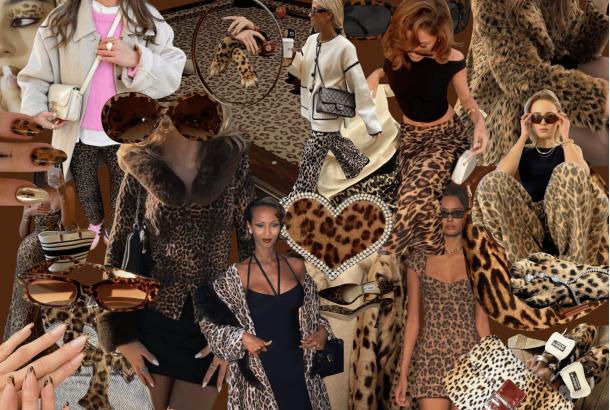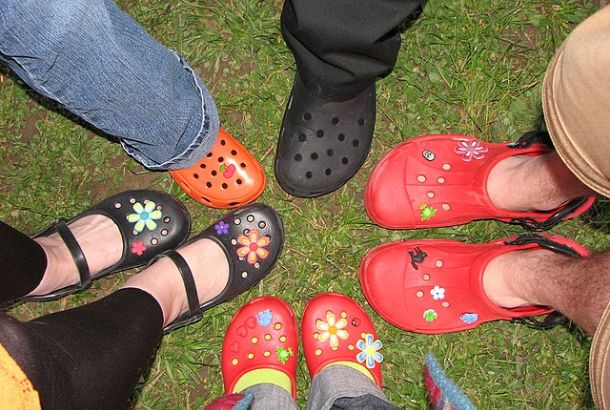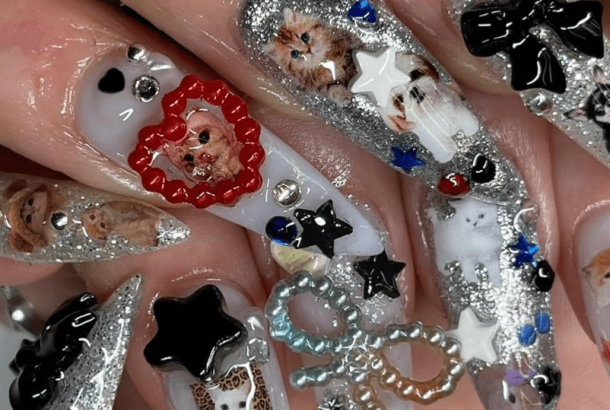Sustainability and plus-size fashion: In conversation with Jenny Marie
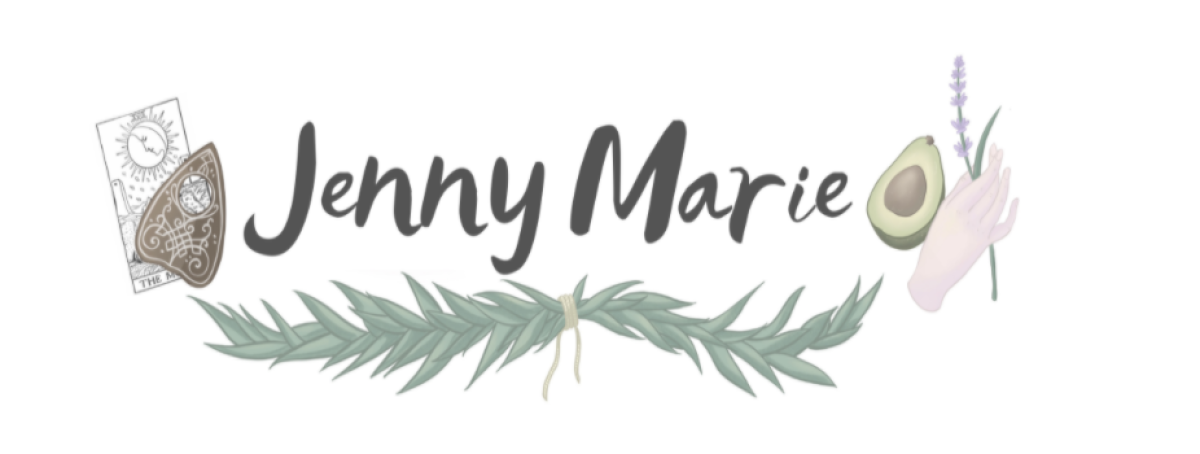
Jenny Marie is behind her eponymous blog where she promotes an ethical and environmentally friendly lifestyle. Through a zoom call, we discussed the issues behind plus-size clothing and specifically the lack of ethical and accessible plus-size clothing in the fashion industry.
She shares her thoughts about the current issues and her learning journey to slower, greener, and ultimately more sustainable fashion choices.
Fast Fashion: The Highs and The Lows
When she was growing up, Jenny never really felt like she could be a consumer of fashion at all. She had to make do with what was available for her size as popular clothing stores never catered to her.
“When I was 12 or 13, Miss Selfridge was ‘the place to shop from’ and I now joke that the only thing I could buy was the glitter nail varnish because there was no way any of the clothes would fit me.”
Since then the fashion industry has slowly evolved and plus sizes have become increasingly available. However, it sometimes seems that fast fashion brands are the only ones that understand that style extends to those above a size 6 as well.
Asos and H&M are some of the only brands that carry plus-size ranges where one can find trends. The clothes don’t scream ‘hide’ but rather ‘own it’ which, considering how other brands tackle the topic, feels insanely refreshing.
However, we are all conscious of the impact of fast fashion on our planet and on garment workers abroad. When one decides to choose the environment and ethics, with the additional criteria of plus-size, options may look scarce.
“Either it’s unbelievably expensive, or it’s fast fashion that will have trendy, colourful and body fitting pieces”.
Still, nearly everyone can make better choices.
“A lot of people believe that they don’t have the money to buy sustainably”.
There are people who truly do not have other choices and for which sustainability should be the least of their concerns. The vast majority of the population simply overconsumes and that is ultimately where the issue lies.
“5 pairs of cheap jeans (if you count that each one will maximum last you 10 wears) will get you one pair that will last you way over 50 wears which at the end of the day is a lot better.”
Consuming less but better is, ultimately, the first step to sustainability and a lasting wardrobe.
Thrift and Thrift Flips
After buying less, thrifting and buying vintage is the next best option. However, the plus-size options can be more difficult to access. Jenny suggests sewing as a way to either upgrade your thrift finds, or, if you are more adventurous, make your own clothes.
If sewing seems like a daunting world to enter, Jenny will quickly debunk that thought.
“That was me! My mum trained as a dressmaker and that was her job for a while and I never learned anything until a year and a half ago, after I inherited her sewing machine. I was genuinely one of those people that thought sewing patterns was just a language that I’d never learn.”
But after watching thrift flips and sewing videos on Youtube, she realized that you can go into a charity shop and look at the plus-size section and not have to necessarily accept the clothes as they are.
You can dye items a different color, take the sleeves off or put darts in to change the fit. that you can dye it a different color, can I take the sleeves off, can I put some dart in it to change the fit.
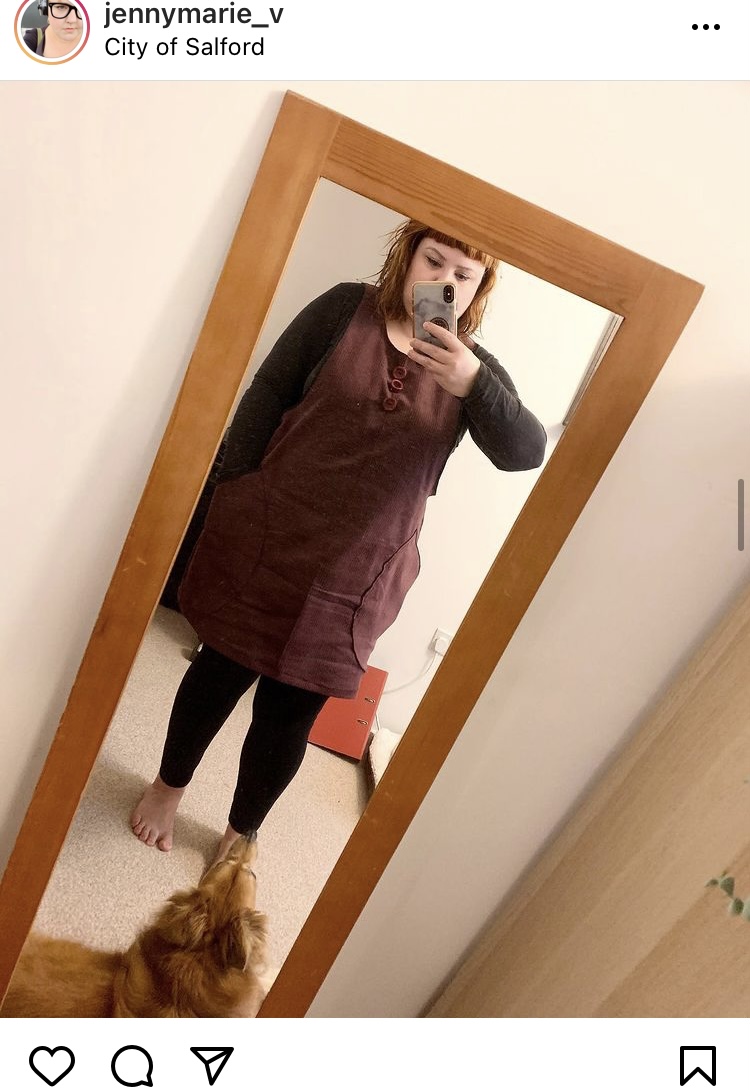
You don’t even need to know how to read patterns to make clothes from scratch.
“Cloning your own clothes is an amazing skill to have if you’re above a size 16 because sometimes you find one piece that fits amazingly well and that’s so rare and you wish it would last forever and it doesn’t but what a lot of people don’t realize is that you can make more of it!”
The best quote I have from Jenny is “You don’t have to accept the stuff as it is”. Even though it’s a bit sad you have to McGuire things so much, you can truly make the most of what’s given to you with a needle and a thread.
Sewing your own
Once you have a pattern, it’s yours… forever. You can then shorten the hem, add sleeves or take off sleeves, change the neckline, change the fabric, the possibilities are endless.
A lot of people assume that making your own clothes is quite expensive (and time-consuming) but if you buy one pattern for £12 and then use it 6 times then it will have effectively cost you £2 per garment and then all you buy is the fabric and the thread.
If you compare that price to fast fashion then you are ultimately comparing the cost of labor of garment workers paid under a living wage, paired with cheap quality. Ultimetely, by sewing your own clothes, you will get clothes tailored to you and of better quality which you will know how to mend as they get used.
“It gives you a lot of appreciation for the time and energy that goes into it and the difference in quality between fast fashion and more expensive clothes”.

She mentions a Cornwall-based company called Seasalt that does ethically made clothes of great quality.
“A tunic is going to be +£50 and people will compare it to something that looks very similar to Primark and say “well why would I buy this at that price when I can get it for much cheaper?”.
“But, if you look closer, you will see that the fabric is better and that perhaps more thread is being used so it will be more sturdy and it will also have details and embellishments that the other wouldn’t have. It’s stuff like that, it makes you see these things that shed light on our false economy.”
Sewing does not only give you an appreciation for the process of making clothes, it also forces you to truly discover your style and free yourself from fleeting trends. When you choose a pattern and you spend so much time making it, you want to make sure that the fruits of your labor will be worn.
“I have this joke that I say to people that my fashion-sense is like an adult-size toddler because I like Mary-Janes shoes and overalls. I have a favourite pattern now, I’ve made it three times.”

She suggests looking up the hashtag for the pattern you want to try on Instagram because it might look completely different with different fabrics and made in different ways than it does on the website. She also recommends a blog series by the curvy sewing collective called “Same pattern, different bodies” where bloggers with completely different bodies will sew the same pattern.
She also recommends the Stitched Up cooperative that gives sewing classes and, under normal circumstances, organizes clothes swaps.
What does the future hold?
Although things are changing and increasingly quickly, we are ultimately far from having solved the issue of plus-size clothing or sustainability.
In 2019 a report called “fixing fashion” made recommendations to the UK government in order to address the unsustainability of the fashion industry, which promoted a mandatory action plan to make companies sustainable. The vast majority of it was rejected. While consumers have a lot of power, people will never start lobbying for more expensive clothes.
‘Although there are people that care, it is never going to be enough so policy change is necessary for real sustainable change to happen”.
The only thing that I may disagree with Jenny about is that we as consumers will never have enough voice. A bit of conversation can go a long way (as does a good Netflix documentary she adds) and if enough people become conscientious consumers instead of barely ‘conscious ones: i.e. people take action instead of just being aware of an issue, then the fashion industry can and will change for the better.
